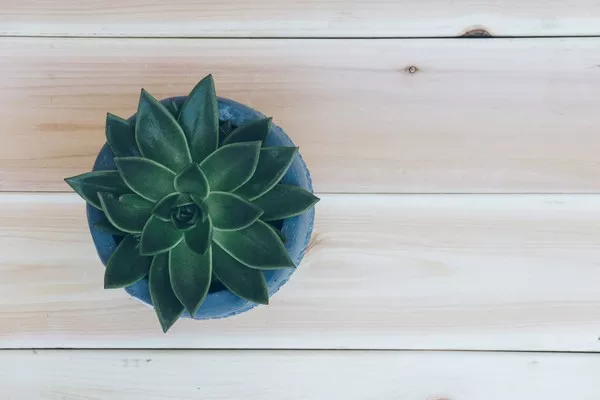Succulents, with their captivating charm and unique characteristics, have garnered immense popularity among plant enthusiasts worldwide. These fascinating plants belong to various botanical families, but what truly sets them apart is their ability to store water in their fleshy leaves, stems, or roots. This adaptation allows them to thrive in arid environments where water is scarce, making them resilient and low-maintenance additions to any indoor or outdoor garden.
Diversity of Succulents
The world of succulents is remarkably diverse, boasting an astonishing array of over 10,000 different species. From the spiky allure of Agave to the delicate rosettes of Echeveria, succulents come in an extensive range of shapes, sizes, and colors. This vast diversity ensures that there’s a succulent to suit every taste and preference, whether you’re drawn to the architectural elegance of Haworthia or the whimsical appeal of Sedum.
Common Varieties
Among the myriad of succulent species, several have gained widespread popularity for their striking appearance and ease of care. The Jade Plant (Crassula ovata), with its glossy green leaves and symbolic significance of prosperity, is a beloved choice for both novice and experienced gardeners. Burro’s Tail (Sedum morganianum), characterized by its trailing stems adorned with plump, bead-like leaves, adds a touch of whimsy to hanging baskets and elevated planters.
Echeveria Elegans, commonly known as “Mexican Snowball,” captivates with its symmetrical rosettes of powdery blue-green foliage, while the Snake Plant (Sansevieria trifasciata) stands tall with its bold, upright leaves boasting striking patterns. Aloe Vera, renowned for its medicinal properties and soothing gel-filled leaves, is a versatile succulent valued for both its ornamental and therapeutic benefits.
Categorization by Genus
To navigate the vast world of succulents, it’s helpful to understand their classification by genus. Here’s a categorized list of some popular succulents and their respective genera:
- Crassula genus: Includes Jade Plant (Crassula ovata) and Crassula Tetragona.
- Sedum genus: Encompasses Burro’s Tail (Sedum morganianum) and Sedum adolphii.
- Echeveria genus: Home to Echeveria Elegans and Echeveria ‘Lola.’
- Sansevieria genus: Features Snake Plant (Sansevieria trifasciata) and Sansevieria cylindrica.
- Aloe genus: Houses Aloe Vera (Aloe barbadensis) and Aloe aristata.
Understanding these genera can provide valuable insights into the characteristics and care requirements of different succulents.
Care Instructions
While succulents are renowned for their resilience, proper care is essential to ensure their health and longevity. Here are some basic care instructions for keeping your succulents thriving:
1. Light: Most succulents prefer bright, indirect light. Place them near a sunny window where they can receive several hours of sunlight each day.
2. Watering: Allow the soil to dry out completely between waterings, then water thoroughly until excess moisture drains from the bottom of the pot. Overwatering is the leading cause of succulent demise, so err on the side of underwatering.
3. Soil: Use a well-draining potting mix specifically formulated for succulents and cacti to prevent waterlogged roots.
4. Temperature: Succulents thrive in warm temperatures but can tolerate brief periods of cold. Protect them from frost and extreme temperature fluctuations.
5. Container: Choose a container with drainage holes to prevent water from accumulating around the roots.
6. Propagation: Many succulents can be easily propagated from stem or leaf cuttings, offering an opportunity to expand your collection or share plants with friends.
By following these care guidelines, you can enjoy lush, vibrant succulents that enhance any indoor or outdoor space.
New Cultivars
The world of succulents is continuously evolving, with new cultivars emerging on the market nearly every week. Nurseries and botanical enthusiasts around the globe engage in crossbreeding and hybridization efforts to develop novel varieties with unique characteristics. These new cultivars showcase an exciting blend of colors, textures, and growth habits, enticing collectors and hobbyists alike to expand their succulent repertoire.
Geographical Distribution
Succulents are found in diverse habitats around the world, ranging from arid deserts to tropical forests. Their geographical distribution influences their growth patterns, water requirements, and aesthetic features. For example, succulents native to desert regions often have adaptations such as thick, waxy coatings or reduced leaf surfaces to minimize water loss, while those from humid environments may exhibit broader leaves to capture moisture from the air.
Conservation Status
While succulents are renowned for their resilience, some species face threats to their survival due to habitat loss, climate change, and illegal collection. Several rare or endangered succulent species are protected by conservation efforts aimed at preserving their natural habitats and promoting sustainable cultivation practices. By raising awareness about the conservation status of these species and supporting initiatives to protect them, we can contribute to the long-term survival of these botanical treasures.
Uses and Benefits
Beyond their aesthetic appeal, succulents offer a myriad of uses and benefits in gardening, decoration, and beyond. In addition to serving as low-maintenance ornamental plants, succulents are valued for their air-purifying properties, making them excellent choices for indoor environments. Some succulents, such as Aloe Vera, have medicinal properties and are used in skincare products and natural remedies for various ailments. Furthermore, succulents are increasingly incorporated into wedding bouquets, floral arrangements, and DIY crafts, showcasing their versatility and enduring popularity among creative enthusiasts.
Conclusion
In conclusion, the world of succulents is a rich tapestry of diversity, beauty, and botanical intrigue. With thousands of species spanning various genera and habitats, succulents continue to captivate plant enthusiasts with their resilience, charm, and endless possibilities for exploration and discovery. Whether you’re a seasoned collector or a novice gardener, succulents offer a delightful journey into the fascinating realm of botanical wonder.


